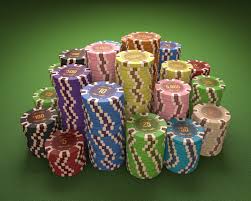Casino online – olika sätt att syssla med detta roliga nöje
Det finns idag massor med olika sätt som du hittar för att få tillgång till casino online. Det handlar inte längre bara om att sätta på datorn och surfa på internet för att hitta det bästa nätcasinot med det bästa spelet, utan sätten är många fler för att få tillgång till ett fullproppat nätcasino direkt. Fortsätt läsa denna text för alla möjligheter som finns för dig och vad vi rekommenderar i olika fall.
| 1 |  |
Videoslots | BESöK CASINOT | |
| 2 |  |
William-Hill.se | BESöK CASINOT | |
| 3 |  |
Lucky Days SE | BESöK CASINOT |
Möjligheten att ladda ned online casino till din dator och spela spännande spel av olika slag
För flera år sedan var det vanligaste sättet att få tillgång till hela online casino genom att ladda ned mjukvara från ett spelbolag till din dator. Sedan öppnade du mjukvaran och kunde välja mellan ett utbud med bland annat spelautomater, slots, bordsspel, roulette, blackjack, videopoker, skraplotter och en massa andra roliga spel i en trygg och säker miljö. En del spel innehöll jackpottar på exempelvis tusentals svenska kronor, men du kunde också spela på skoj om du ville innan du började spela för riktiga pengar för riktiga vinster. Ibland fanns det också bonusar att hämta, till exempel omsättningsfria bonusar eller storspelare bonus på bästa insättningsbonus casino.
Visste du att du inte behöver besöka ett casino för att spela för låtsaspengar? https://www.svenskaonlinecasino.info erbjuder dig mängder med de mest populära spelen som erbjuds på casino online. Spela kostnadsfritt hos dem och få underhållning på hög nivå.
Möjligheten till bästa casino online som spel direkt i webbläsaren, utan att behöva ladda ned någonting
På nya casinon är det betydligt vanligare att bästa casino online finns som spel direkt i webbläsaren, utan att du behöver ladda ned någon mjukvara alls till din dator. Detta gäller både för nätcasinon som kräver registrering och de casinon på nätet där du kan börja spela utan att registrera ett konto som på många svenska nätcasino.
Möjligheten till spel på mobil på svenska online casino för den mest flexibla casinoupplevelsen


Svenska spelare gillar idag också att ha möjlighet till lite mer flexibilitet genom att ha tillgång till svenska online casino var som helst. Genom att spela på ett mobilcasino är du inte begränsad till plats, utan så länge du har fungerande uppkoppling till internet någonstans i Sveriges avlånga land kan du njuta av roliga och spännande casinospel på casino på mobilen. Var noga med att kolla att mobilcasinot har en ny svensk licens, så att det är lagligt att spela på det casino du väljer med alla regler och villkor. Det är viktigt att spelen är rättvisa och att det är ansvarsfullt spelande som gäller. Naturligtvis ska du kunna göra säkra insättningar och snabba uttag med skattefria vinster när du haft turen att vinna.
Möjligheten till spel på surfplatta på svenska casino online för den ultimata spelupplevelsen
När det är obekvämt att sitta vid datorn, men mobilen känns för liten är det praktiskt att kunna spela på surfplattan. Alla svenska casino online just nu som erbjuder mobilcasinon kan också erbjuda casino online med bra spelutbud för surfplattan. Här får du bekvämligheten av en mobil tillsammans med tydligheten av en dator – ett ultimat svenskt nöje med andra ord.
Möjligheten till åtkomst till casino online Sverige genom att spela på en nedladdad app på din enhet
När du väljer att spela på mobilen eller surfplattan kan du ibland välja att ladda ned en app för casino online Sverige eller spela direkt i webbläsaren. I vissa fall ger en app en något bättre spelupplevelse med till exempel exklusiva funktioner, men om din mobil redan är överfull kanske det passar bättre att spela på svenska casinon direkt i webbläsaren istället för att ladda ned en app som tar upp ännu mer plats. Som du ser finns det vissa olika sätt att spela nätcasino på. Läs på, så att du får bäst upplevelse nästa gång du satsar på att vinna jackpotten!
Vad är framtiden inom casino online? www.creativenorrbotten.se tror att det är Virtual Reality, och det kan nog ligga något i det påståendet. Vi väntar med spänning för att se vad casinona kommer att utveckla härnäst.


